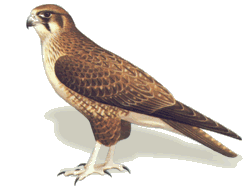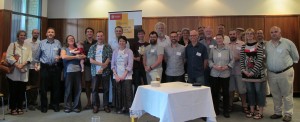The challenge

‘Australia’s Most Widespread’ bird, according to Birdata’s featured bird last week, is the Brown Falcon, Falco berigora. A few months ago, a ‘complete guide to the origin of Australian bird names’ (that is, English and Linnæan names), was published, and in it Fraser and Gray (2013:80) summarised the published information on this species name:
berigora [is] stated in many places to be the name for the bird in an indigenous language, though nobody appears willing to nominate a particular language. The original namers, Vigors and Horsfield (1827), simply said: ‘The native name of this bird, which we have adopted as its specific name, is Berigora’. Gould (1848) mentioned ‘Aborigines of New South Wales’ against the word, and Morris (1898), in his Dictionary of Austral English, claimed it is made up of beri, claw, and gora, long. The word does not appear in a glossary of the languages spoken by indigenous people of the Sydney region as the time of early white settlement (Troy 1994), though many other bird names do, and the bird was certainly to be found there. Are the claws longer than those of other falcons? Perhaps not, and indeed, the toes, according to Debus (2012:131), are shorter.
Actually Falco berigora Vigors and Horsfield 1827:184-5 is one of only three birds whose scientific (Linnæan) name draws on a word of an Australian language.1 The word berigora has managed to survive in this ornithological niche, and is now guaranteed as much as longevity as science can offer. But can we give due credit to the language which provided it?
 Follow
Follow